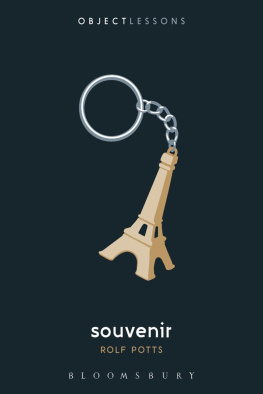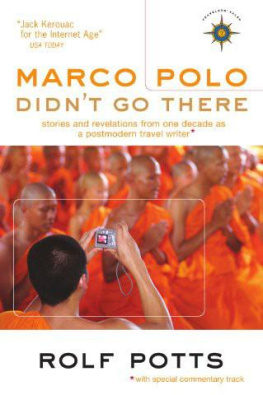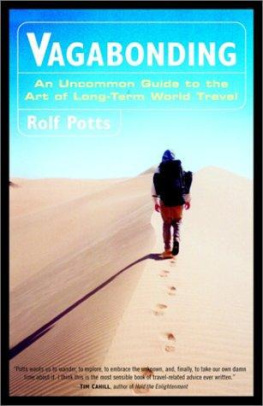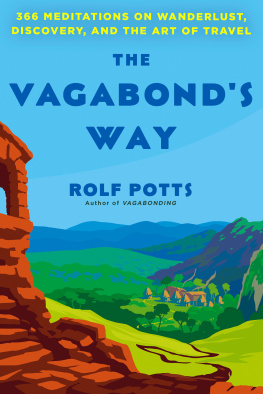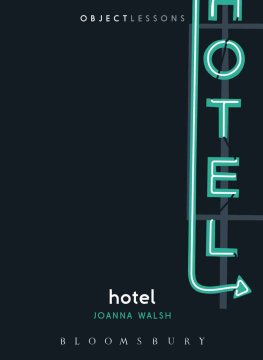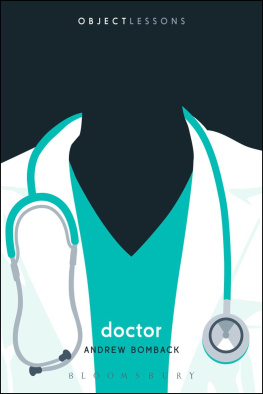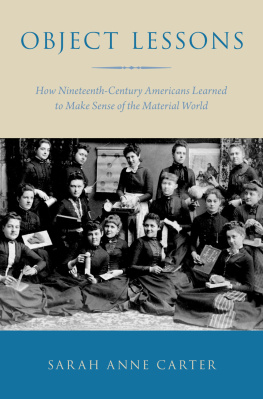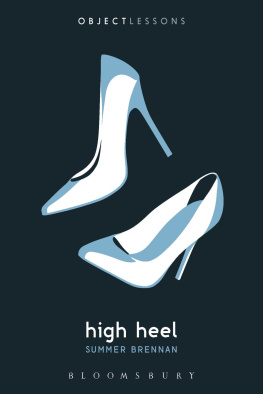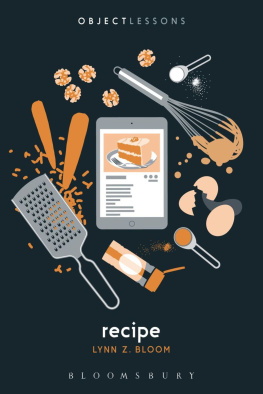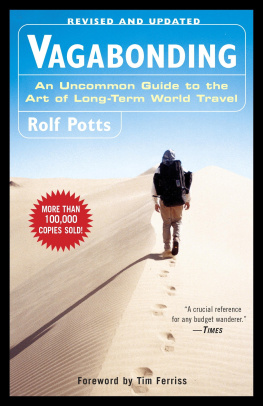The Object Lessons series achieves something very close to magic: the books take ordinaryeven banalobjects and animate them with a rich history of invention, political struggle, science, and popular mythology. Filled with fascinating details and conveyed in sharp, accessible prose, the books make the everyday world come to life. Be warned: once youve read a few of these, youll start walking around your house, picking up random objects, and musing aloud: I wonder what the story is behind this thing?
Steven Johnson, author of Where Good Ideas
Come From and How We Got to Now
Object Lessons describes themselves as short, beautiful books, and to that, Ill say, amen.... If you read enough Object Lessons books, youll fill your head with plenty of trivia to amaze and annoy your friends and loved onescaution recommended on pontificating on the objects surrounding you. More importantly, though... they inspire us to take a second look at parts of the everyday that weve taken for granted. These are not so much lessons about the objects themselves, but opportunities for self-reflection and storytelling. They remind us that we are surrounded by a wondrous world, as long as we care to look.
John Warner, The Chicago Tribune
In 1957 the French critic and semiotician Roland Barthes published Mythologies , a groundbreaking series of essays in which he analysed the popular culture of his day, from laundry detergent to the face of Greta Garbo, professional wrestling to the Citron DS. This series of short books, Object Lessons, continues the tradition.
Melissa Harrison, Financial Times
Though short, at roughly 25,000 words apiece, these books are anything but slight.
Marina Benjamin, New Statesman
The Object Lessons project, edited by game theory legend Ian Bogost and cultural studies academic Christopher Schaberg, commissions short essays and small, beautiful books about everyday objects from shipping containers to toast. The Atlantic hosts a collection of mini object-lessons.... More substantive is Bloomsburys collection of small, gorgeously designed books that delve into their subjects in much more depth.
Cory Doctorow, Boing Boing
The joy of the series... lies in encountering the various turns through which each of their authors has been put by his or her object. The object predominates, sits squarely center stage, directs the action. The object decides the genre, the chronology, and the limits of the study. Accordingly, the author has to take her cue from the thing she chose or that chose her. The result is a wonderfully uneven series of books, each one a thing unto itself.
Julian Yates, Los Angeles Review of Books
... edifying and entertaining... perfect for slipping in a pocket and pulling out when life is on hold.
Sarah Murdoch, Toronto Star
... a sensibility somewhere between Roland Barthes and Wes Anderson.
Simon Reynolds, author of Retromania: Pop Cultures
Addiction to Its Own Past
OBJECT LESSONS
A book series about the hidden lives of ordinary things.
Series Editors:
Ian Bogost and Christopher Schaberg
Advisory Board:
Sara Ahmed, Jane Bennett, Jeffrey Jerome Cohen, Johanna Drucker, Raiford Guins, Graham Harman, rene hoogland, Pam Houston, Eileen Joy, Douglas Kahn, Daniel Miller, Esther Milne, Timothy Morton, Kathleen Stewart, Nigel Thrift, Rob Walker, Michele White.
In association with
BOOKS IN THE SERIES
Remote Control by Caetlin Benson-Allott
Golf Ball by Harry Brown
Drivers License by Meredith Castile
Drone by Adam Rothstein
Silence by John Biguenet
Glass by John Garrison
Phone Booth by Ariana Kelly
Refrigerator by Jonathan Rees
Waste by Brian Thill
Hotel by Joanna Walsh
Hood by Alison Kinney
Dust by Michael Marder
Shipping Container by Craig Martin
Cigarette Lighter by Jack Pendarvis
Bookshelf by Lydia Pyne
Password by Martin Paul Eve
Questionnaire by Evan Kindley
Hair by Scott Lowe
Bread by Scott Cutler Shershow
Tree by Matthew Battles
Earth by Jeffrey Jerome Cohen and Linda T. Elkins-Tanton
Traffic by Paul Josephson
Egg by Nicole Walker
Sock by Kim Adrian
Eye Chart by William Germano
Whale Song by Margret Grebowicz
Tumor by Anna Leahy
Jet Lag by Christopher J. Lee
Shopping Mall by Matthew Newton
Personal Stereo by Rebecca Tuhus-Dubrow
Veil by Rafia Zakaria
Burger by Carol J. Adams
Luggage by Susan Harlan
Souvenir by Rolf Potts
Rust by Jean-Michel Rabat
Doctor by Andrew Bomback (forthcoming)
High Heel by Summer Brennan (forthcoming)
Train by A. N. Devers (forthcoming)
Pixel by Ian Epstein (forthcoming)
Fog by Stephen Sparks (forthcoming)
Blanket by Kara Thompson (forthcoming)
We collect to survive; our survival depends in part on our ability to classify and codify and catalogue: we hunt and choose in order to tame chaos, to bring order to a world too full of being, too full of things.... Over our possessions, we allow ourselves to believe, we have control. With our possessions we weave our shrouds. Everything we collect is a memento mori.
Barbara Grizzuti Harrison, An Accidental Autobiography (1997)
Contents

It has been a recurring daydream for me, as Ive written this book, that it will one day be stocked in gift-shop stalls around the world, from the British Museum in London, to Disneyland in Anaheim, to Bangkoks Chatuchak Market. That way, should the breadth of souvenir options on offer overwhelm a given tourist, he or she can simply go meta and commemorate the travel experience with this book, Souvenir .
In a way, this is a souvenir guidebook of sortsnot a rundown of what items to collect, or where to find them, but an exploration of why we seek out these objects as we travel, what they have represented to travelers in past ages, and how we use them to narrate our lives.
My earliest memory of collecting souvenirs goes back to age seven, when I took a series of Amtrak trains to Chicago with my family. It was the furthest Id ever traveled from my South Central Kansas home, and the giant Midwestern metropolis full of skyscrapers, museums, and traffic jams struck me as wonderfully exotic. I was particularly enamored with the ocean-like expanse of Lake Michigan, and one afternoon, while walking along a pebbled lakeside beach, I happened upon a large white clamshell ribbed with brownish-yellow stripes. Thrilled at this discovery, I squirreled the clamshell away in my knapsack, and it eventually found a place of honor in my bedroom. Over time, this shell became the centerpiece of a makeshift shrine that held other travel souvenirspins, coins, pebbles, embroidered patches, figurines, ticket stubs.
As I grew older I added to this piecemeal souvenir collection without thinking much about why I had been drawn to the items in question. Sometimes my travel souvenirs were found objects; other times these objects had been purchased from vendors or given to me as gifts. It wasnt until I moved to Asia to work as an English teacher in my mid-twenties that I realized how each of these souvenirs hinted at narratives that were far more complexfar more connected to my core sense of selfthan Id previously assumed.

